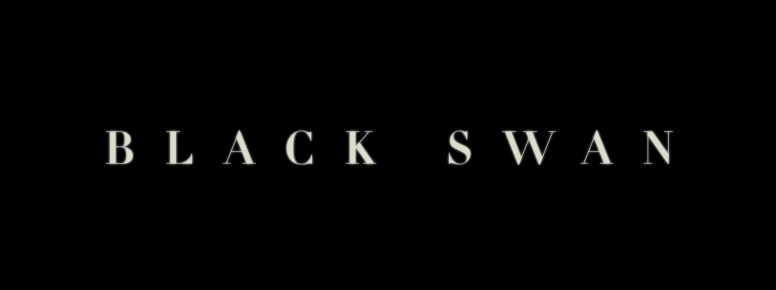
BUY FROM AMAZON: CLICK HERE!
STUDIO: Fox Searchlight
MSRP: $21.99
RATED: R
RUNNING TIME: 108 minutes
SPECIAL FEATURES:
- Cast Profiles – Roles of a Lifetime: A handful of interviews with Black Swan‘s stars.
- Metamorphosis: A Three-Part documentary on the filmmaking process, Aronofsky’s vision, the special effects, the dance scenes, and physical acting.
- Behind the Curtain: A look at Black Swan‘s costumes and production design.
- Ten Years in the Making: Natalie Portman and Darren Aronofsky discuss Black Swan‘s evolution.
The Pitch
Darren Aronofsky dopplegangs up on Natalie Portman.
The Humans
Natalie Portman, Mila Kunis, Vincent Cassell, Barbara Hershey, Winona Ryder
The Nutshell
After being selected as the lead in a featured performance of Swan Lake, fragile ballet dancer Nina Sayers (Portman) begins to question her identity when her repressed desires and drive for perfection begin to manifest themselves in sinister ways. Competitor Lily (Kunis), company director Thomas (Cassell), and her overbearing Mother (Hershey) ultimately push Nina toward perfection, but at a cost.

The Lowdown
Dopplegangers are well-worn territory in film. They’re not quite as on-the-nose as the Evil Twin, but they’re equally susceptible to heavy handed metaphors about the light and darkness inside of all of us. If you’re witnessing a mirror gag, there’s a decent chance you’re watching a doppleganger movie, or at least a derivation of one. If you like horror anthology shows, this trope is responsible for all the worst episodes. See The Broken, Doppelganger, and Superman III if you’re wondering how to get it completely wrong. See Mulholland Drive, Dead Ringers, Vertigo, and now Black Swan for how it’s done right.

So what makes a doppleganger/evil-twin/darkness-inside-you movie any good? For starters, it doesn’t use the doppleganger conceit as a springboard for cheap scares. Writers of bad doppleganger stories assume that evil doubles are de facto disturbing, much like how mid 2000’s J-Horror purveyors assumed that long black hair is automatically scary, plot be damned. You’ve already established that your protagonist’s dark half is stalking her from the shadows? Just throw up a sink and a mirror and have some scary shit happen. But doppelgangers aren’t de facto disturbing, and can unintentionally push the tone of a movie into very silly territory. A film needs to build an architecture around this conceit that makes the ‘evil double’ matter thematically, which is something that Black Swan does with style left to spare.
It helps that Black Swan transcends genre trappings and never trips into formula. It’s filled with horrific elements – Nina’s gruesome transformation and her accompanying hallucinations are the stuff of nightmares – but it’s not a pure horror movie, just as The Wrestler isn’t a sports movie. Black Swan‘s multi-camera, documentary footage style roots the film in a no-man’s land between reality and genre, and makes it something entirely new. It also helps that Swan is playful with conventions like the mirror scare, and does new things that deconstruct common genre elements in new and interesting ways. It even takes a run at the infinity mirror.

Portman’s Oscar winning performance in Swan might contain several of her signature crying outbursts, but here it feels entirely justified. She nails Nina’s stretched-too-thin persona, and her transformation into the liberated Black Swan never seems cheap or manufactured; the black swan denouement (below) wouldn’t be the highlight of the film without Portman buying into the role completely. Mila Kunis’ Lily plays the perfect counterpoint to Portman’s rigid, high-strung Nina. Hershey, Cassell, and Ryder don’t just play backup; they’re all integral parts of Nina Sayers’ metamorphosis, making the gut-punch of Swan’s last act both believable and affecting.
Of course, Black Swan is more than just a Doppleganger horror. It’s a character film about a painful struggle toward artistic fulfillment, and is a testament to the idea that great art comes from pain, conflict, and tragedy. It’s also Aronofsky’s most straightforward film, which isn’t a slight in the least. Black Swan isn’t ambiguous with its intentions, which makes them all the more powerful.

The Package
If you’re reading this, there’s a good chance you’ve already seen Black Swan and are more interested in the specs and bonus features on the Blu Ray. You won’t come away disappointed – there’s Metamorphosis, a feature length documentary on the nuts and bolts behind Black Swan’s inception, and a wealth of interviews with the cast and crew. Metamorphosis details some of the creative techniques used to generate Black Swan‘s style, including the unintrusive CG (most of the major sequences have heavy CG elements, but are generally transparent to the viewer), and Aronofsky’s decision to shoot the film using a mix of cameras, including digital Canon DSLRs and a 16mm Arriflex.
There’s a noticeable amount of noise in the transfer, but it’s clearly intentional, and is nothing different than what we saw in theaters. the DTS-HD track brings both the dialogue and the music to life in some amazing ways. If you have a good home theater, expect to reap serious dividends from Black Swan‘s audio track.
Rating:





Out of a Possible 5 Stars
